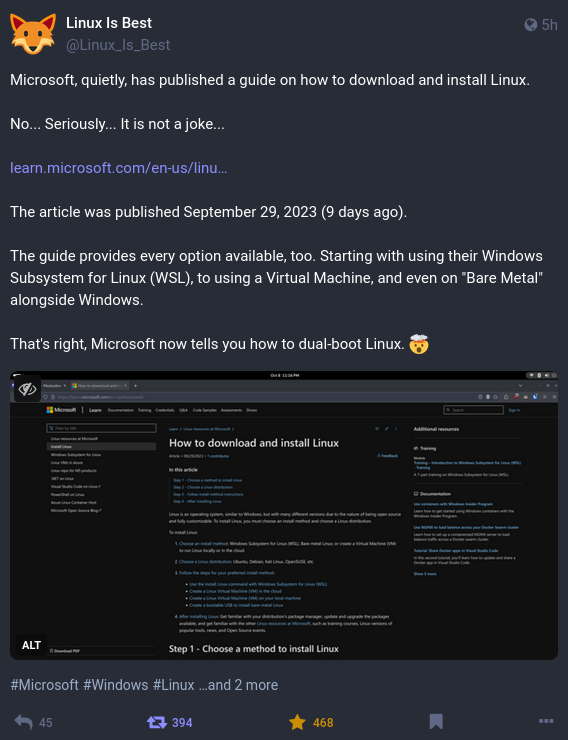this post was submitted on 09 Oct 2023
1835 points (98.2% liked)
Linux
48364 readers
1511 users here now
From Wikipedia, the free encyclopedia
Linux is a family of open source Unix-like operating systems based on the Linux kernel, an operating system kernel first released on September 17, 1991 by Linus Torvalds. Linux is typically packaged in a Linux distribution (or distro for short).
Distributions include the Linux kernel and supporting system software and libraries, many of which are provided by the GNU Project. Many Linux distributions use the word "Linux" in their name, but the Free Software Foundation uses the name GNU/Linux to emphasize the importance of GNU software, causing some controversy.
Rules
- Posts must be relevant to operating systems running the Linux kernel. GNU/Linux or otherwise.
- No misinformation
- No NSFW content
- No hate speech, bigotry, etc
Related Communities
Community icon by Alpár-Etele Méder, licensed under CC BY 3.0
founded 5 years ago
MODERATORS
you are viewing a single comment's thread
view the rest of the comments
view the rest of the comments

This is consistent with the "Linux is for backend services and command line" mentality. For me those are nice and important, but I prefer the Linux desktop experience, so those options are of no solace. The VM is ultimately constrained on what it can do UI wise.
I flip the relationship the other way around. Linux on bare metal, Windows in a VM. For people needing windows games, this would be a non starter, however I've got enough games between Linux native, emulators, and proton with steam. Windows as a separate box would be my strategy if needed.